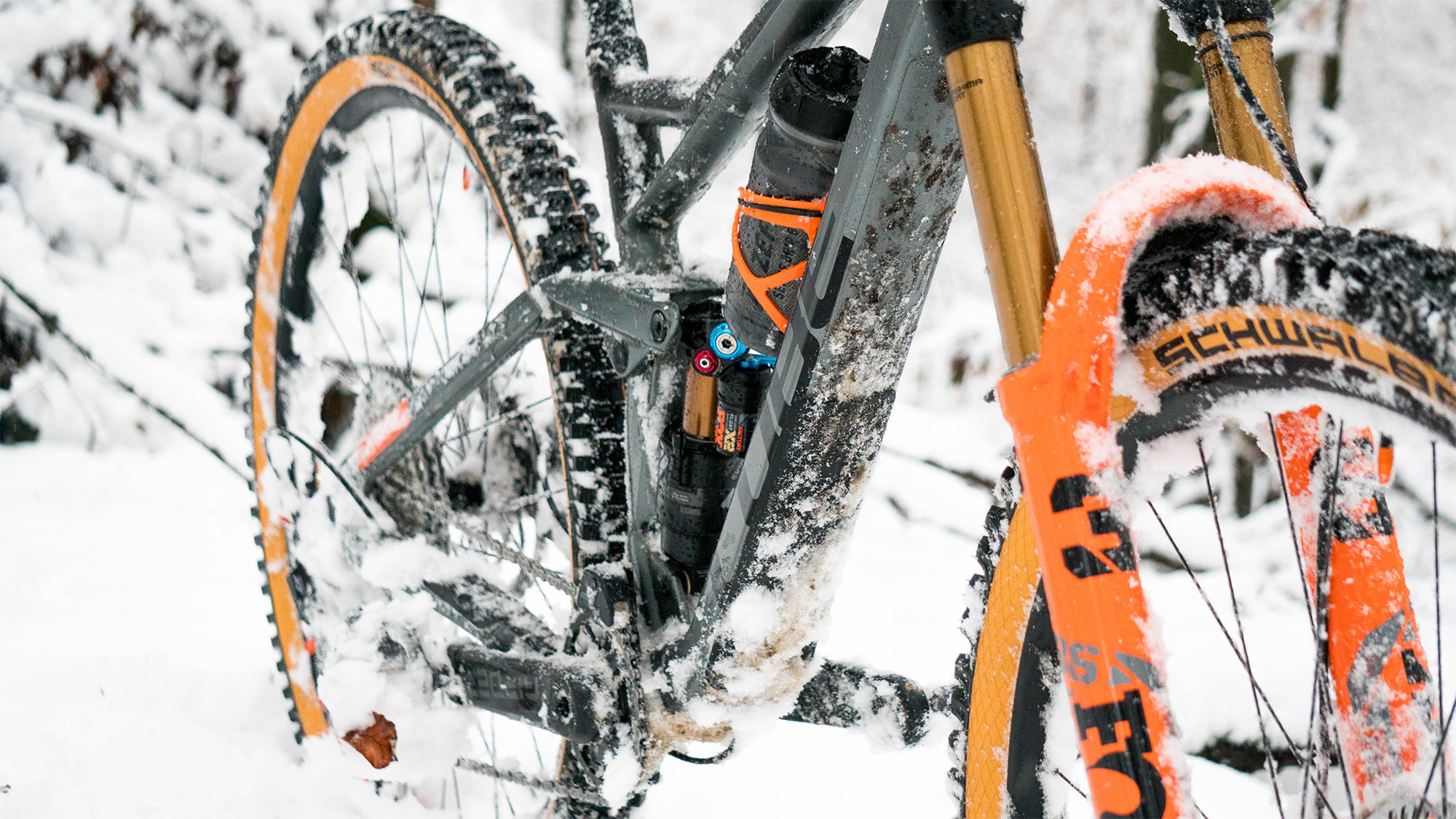
Advice and tutorials
HOW DO I EQUIP MY BIKE FOR NIGHT RIDING?
A someone once said, winter is coming... and the nights are getting longer, so you need to be well equipped to see, be seen and keep riding safely. Special cycling equipment is available, discover our tips for safe night-time cycling!
The importance of lighting when cycling at night
Without lighting, cyclists are difficult to see in bad weather and especially at night, making them vulnerable on the road. That's why it's vital to have lights on your bike, whatever your riding style.
The law requires the use of front and rear lights, in addition to reflectors, when riding at night. It is also mandatory to wear a high-visibility vest when riding in out-of-town areas in poor lighting conditions, at night or in bad weather. Cyclists must be equipped with lighting in good working order.
When riding at night, it's essential to go beyond front lighting in the strict sense of the term, as cyclists are often difficult to see from the side, especially at intersections. To resolve this problem, lighting must be equipped with backlighting technology that provides wide angular visibility, thus guaranteeing optimum vision to the side, as is the case with our Supervision range.
The distance at which a cyclist is visible to cars depends on his equipment. When cycling at night, a cyclist with good lighting but wearing dark clothing and without a high-visibility vest will only be seen from 35 meters. On the other hand, if they are wearing a retro-reflective vest and have good lighting, their visibility to cars will extend beyond 60 meters.
To make sure you don't dazzle other users, such as cars, it's important to adjust your front lighting properly. To do this, simply place an object on the ground, about 5 meters from the bike, switch on the light and adjust the beam angle until the light illuminates the object.

Choosing the right lighting
The choice of lighting depends on the activity: the darker it is, the lower the cyclist's visibility, and the more vulnerable he is. Depending on the activity, the power of the lighting, as well as its diffusion distance, play an important role. LED lighting is preferable, as it offers high light output and low power consumption.
If you ride mainly on roads, in suburban areas or in the countryside, the Supervision F800 is ideal, offering both excellent visibility and great safety. On the other hand, if you're riding in the city, especially on a commuting bike, we recommend Supervision F200, to complement existing city lights.
For long distances, such as ultracycling, lighting autonomy becomes an essential criterion. In this case, dynamo lights, which recharge as you pedal, are to be preferred.
Finally, for activities such as mountain biking, where visibility in the forest is difficult, powerful lighting is essential to guarantee your safety. A model with at least 1000 lumens, such as the Supervision F1500, designed for night outings in the countryside and on trails, is a perfect choice!
The bike's rear lighting plays a crucial role during both day and night, enabling other road users to see the cyclist from a distance. The flashing mode of the various lights not only extends range, but also offers other essential safety benefits, as a cyclist has no view of what's going on behind him. It catches the drivers attention, creating a visual disturbance that helps to increase the safety distance between the cyclist and vehicles, as well as making the cyclist to be spotted from a greater distance by other road users.
Our range includes the Supervision R150, which can be attached to the bike in a variety of ways: either to the seatpost with its silicone strap, or to the saddlebag with its clip system at the back of the light. In flashing mode, this lighting system offers a battery life of up to 35 hours.
All our lights are certified IPX6 (protection index), guaranteeing resistance to water and impact. What's more, the use of aluminum on the upper part of the light ensures faster dissipation of the heat generated by the lighting.

The right equipment for night riding
We know that one of the most important elements in a cyclist's safety, in addition to lighting, is the helmet. To combine the two, helmets with integrated lights exist, which maximize safety by increasing the cyclist's visibility on the road at night.
For activities such as mountain biking, where visibility in the forest is crucial, various accessories can enhance your experience! The Helmet Bracket allows you to attach your lights directly to your helmet, giving you overhead vision and a wider field of view, while following your gaze.
To accompany our lights, we have designed the Light Remote Button. Thanks to this simple, practical button, cyclists - and mountain bikers in particular - can control their lights without taking their hands off the handlebars, guaranteeing comfort and safety when out in the woods.
The Go Pro Interface is also one of the accessories we offer to complement our lights. This mount enables you to place your lighting at the same level as your Garmin mount or other bike computer mounts, and adds a certain aesthetic appeal to the lighting installation.
Seeing is an important factor in cycling, but being seen is even more so! In addition to reflectors and lighting, you can also use retro-reflective clothing. In this category, you'll find high-visibility vests, Doowahs, which are trouser clips with a wide reflective strip, and technical cycling clothing such as fluorescent jackets to increase cyclist visibility. You can find all our winter essentials here.



.jpg)
_1.jpg)